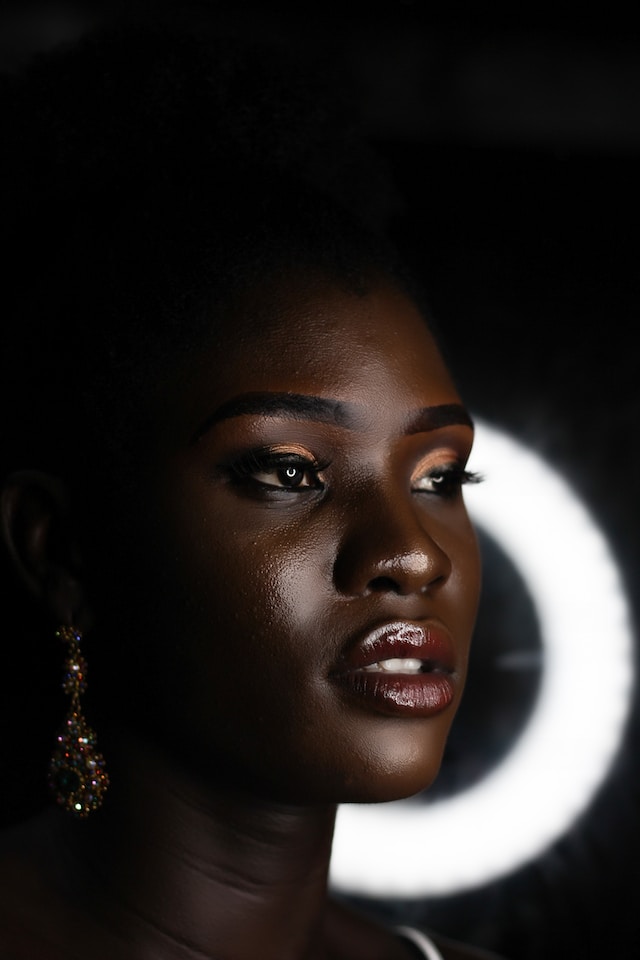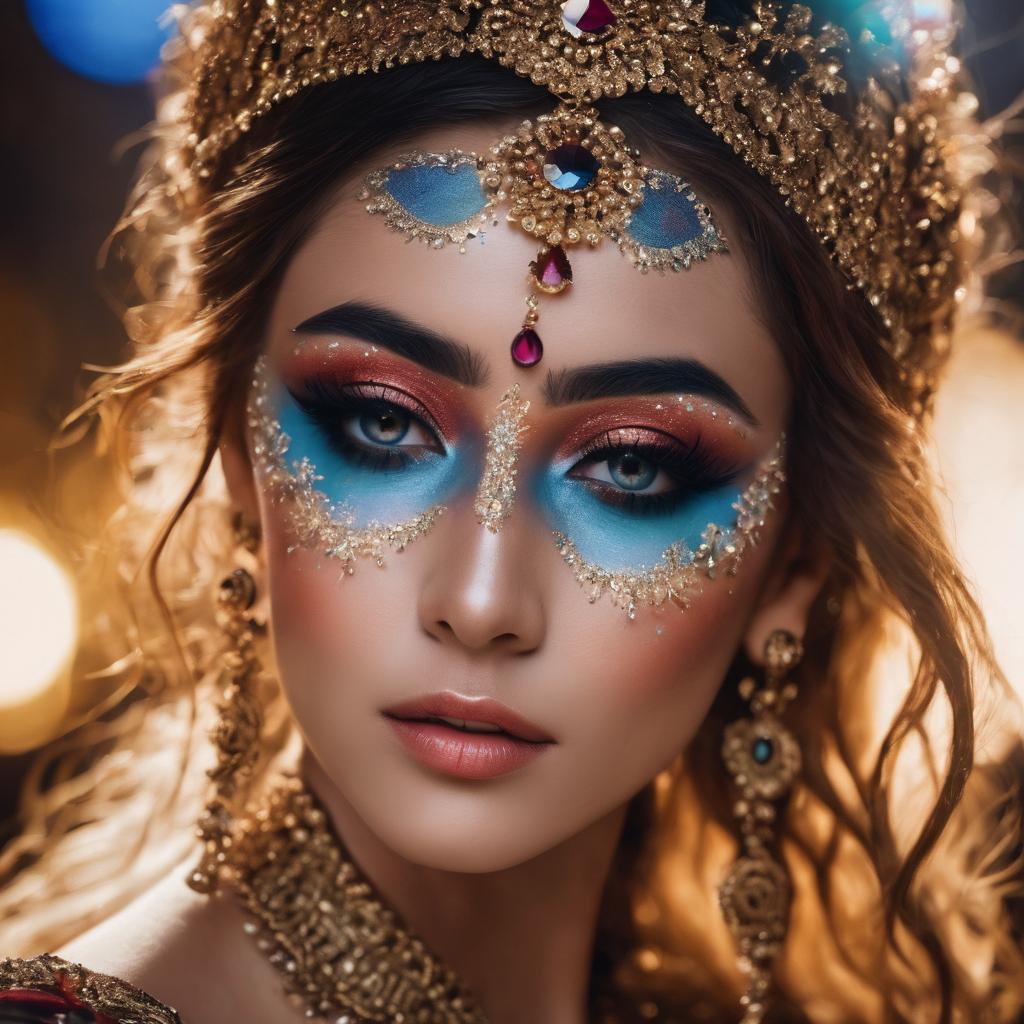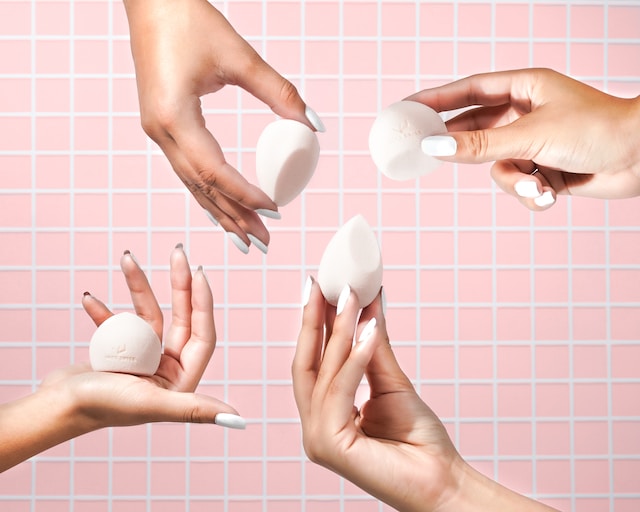Contents
- 1 Mastering the Basics of Makeup Application
- 2 Understanding Your Skin Type and Selecting the Right Products
- 3 Prepping Your Skin for Makeup: Cleansing, Exfoliating, and Moisturizing
- 4 Choosing the Perfect Foundation for a Flawless Base
- 5 Concealing Imperfections: Tips and Tricks for a Smooth Complexion
- 6 Enhancing Your Features with Contouring and Highlighting
- 7 Achieving Beautifully Defined Brows
- 8 Creating Mesmerizing Eye Makeup Looks
- 9 Adding Color and Definition to Your Lips
- 10 Setting Your Makeup for Long-Lasting Perfection
Mastering the Basics of Makeup Application
Makeup application can seem like a daunting task, especially for beginners. But fear not! With a little practice and the right techniques, you can become a pro in no time. The key to mastering the basics of makeup application lies in understanding the importance of a clean canvas. Before you even think about applying makeup, make sure your skin is clean and moisturized. This will not only help your makeup go on smoothly, but it will also prevent clogged pores and breakouts.
Once your skin is prepped, it’s time to start with the basics. Begin by applying a primer to create a smooth base for your makeup. This will help your foundation and other products to adhere better and last longer. Next, choose a foundation that matches your skin tone. Apply it evenly all over your face using a brush or a beauty blender. Remember to blend it well into your skin for a natural look. Don’t forget to conceal any blemishes or dark circles with a concealer. Pat the product gently onto the targeted areas and blend it seamlessly into your foundation for a flawless finish.
• Clean and moisturize your skin before applying makeup
• Use a primer to create a smooth base for your makeup
• Choose a foundation that matches your skin tone
• Apply foundation evenly using a brush or beauty blender
• Blend the foundation well into your skin for a natural look
• Conceal blemishes and dark circles with a concealer
Understanding Your Skin Type and Selecting the Right Products
Understanding your skin type is crucial when it comes to selecting the right products for your makeup routine. Different skin types have different needs, and using products that are not suitable for your skin type can lead to various issues such as breakouts, dryness, or excessive oiliness.
The first step in understanding your skin type is to determine whether you have oily, dry, combination, or sensitive skin. Oily skin tends to produce excess sebum, leading to a shiny appearance, while dry skin lacks moisture and can feel tight or flaky. Combination skin is a mix of both oily and dry areas, while sensitive skin is easily irritated and prone to redness and allergies. Once you have identified your skin type, you can then choose products specifically formulated to address its unique needs, such as oil-free moisturizers for oily skin or hydrating creams for dry skin.
• Oily skin: tends to produce excess sebum, leading to a shiny appearance
• Dry skin: lacks moisture and can feel tight or flaky
• Combination skin: a mix of both oily and dry areas
• Sensitive skin: easily irritated and prone to redness and allergies
Choosing the right products for your specific skin type is essential in maintaining its health and achieving desired results. Using products that are not suitable for your skin type can worsen existing issues or create new ones. Here are some tips on selecting the right products based on different skin types:
1. Oily Skin:
– Look for oil-free or non-comedogenic moisturizers to avoid clogging pores.
– Use lightweight, water-based foundations or powders that control shine.
– Opt for gel cleansers that effectively remove excess oil without stripping the skin.
2. Dry Skin:
– Seek out rich, creamy moisturizers with ingredients like hyaluronic acid or shea butter.
– Consider using facial oils as an extra layer of hydration before applying moisturizer.
– Avoid harsh exfoliants and opt for gentle scrubs or chemical exfoliators.
3. Combination Skin:
– Use separate products for different areas of the face – hydrating creams for dry patches and oil-free formulas for oily zones.
– Consider using mattifying primers in oily areas to control shine throughout the day.
– Choose gentle cleansers that do not strip away natural oils but still effectively cleanse.
4. Sensitive Skin:
– Look for fragrance-free, hypoallergenic skincare products to minimize irritation risk.
– Avoid harsh chemicals like sulfates or alcohol in cleansers and toners.
– Patch test new products before fully incorporating them into your routine.
Remember, everyone’s skin is unique, so what works well for one person may not work as effectively for another. It may take some trial and error to find the perfect products for your skin type. Consulting with a dermatologist can also provide valuable insights and recommendations tailored specifically to your skin’s needs. Taking the time to understand your skin type and selecting the right products will help you achieve healthy, radiant skin.
Prepping Your Skin for Makeup: Cleansing, Exfoliating, and Moisturizing
Cleansing, exfoliating, and moisturizing are essential steps in prepping your skin for makeup application. Before diving into the world of cosmetics, it is important to start with a clean canvas. Choose a gentle cleanser that suits your skin type and use it to remove dirt, oil, and impurities. Gently massage the cleanser onto your face, focusing on areas prone to congestion such as the forehead, nose, and chin. Rinse thoroughly with lukewarm water and pat dry with a soft towel.
Exfoliation is another crucial step in achieving a smooth and radiant complexion. By gently removing dead skin cells, exfoliation helps to improve the texture and tone of your skin. Depending on your skin’s sensitivity, opt for either a physical or chemical exfoliator. Physical exfoliators contain granules or beads that physically slough off dead skin cells, while chemical exfoliators use ingredients like alpha-hydroxy acids (AHAs) or beta-hydroxy acids (BHAs) to dissolve the bonds between cells. Whichever method you choose, remember to be gentle and avoid over-exfoliating, as this can lead to irritation.
Once your skin is cleansed and exfoliated, it’s time to moisturize. No matter your skin type, hydrating your skin is crucial for its overall health and for creating a smooth canvas for makeup application. Look for a moisturizer that is suitable for your skin type, whether it be dry, oily, combination, or sensitive. Apply a small amount of moisturizer all over your face, gently massaging it into the skin using upward strokes. Give the moisturizer a few minutes to fully absorb before proceeding with your makeup routine. This step not only nourishes your skin but also helps to create a barrier between your skin and makeup products, ensuring a better application and longer-lasting wear.
• Choose a gentle cleanser that suits your skin type to remove dirt, oil, and impurities
• Gently massage the cleanser onto your face, focusing on congested areas like the forehead, nose, and chin
• Rinse thoroughly with lukewarm water and pat dry with a soft towel
• Exfoliation helps improve the texture and tone of your skin by removing dead skin cells
• Opt for either a physical or chemical exfoliator depending on your skin’s sensitivity
• Be gentle and avoid over-exfoliating to prevent irritation
• Moisturizing is crucial for overall skin health and creating a smooth canvas for makeup application
• Look for a moisturizer suitable for your specific skin type (dry, oily, combination, sensitive)
• Apply a small amount all over your face using upward strokes
• Allow the moisturizer to fully absorb before proceeding with makeup application
Choosing the Perfect Foundation for a Flawless Base
Choosing the perfect foundation is crucial for achieving a flawless base. With the wide range of options available in the market, it can be overwhelming to find the one that suits your skin tone and type. To start, it is important to determine your skin undertone, whether it is warm, cool, or neutral. This will help you select a foundation shade that complements your skin tone and enhances your natural beauty. Additionally, consider your skin type – whether it is dry, oily, or combination. This will guide you in selecting a foundation formula that stays put and provides the desired level of coverage throughout the day.
When it comes to the texture of the foundation, there are various options to choose from. For those seeking a lightweight and natural-looking finish, a liquid foundation may be the best choice. It effortlessly blends into the skin, providing a smooth and even complexion. On the other hand, for individuals with oily or blemish-prone skin, a matte foundation can help control shine and minimize the appearance of pores. Moreover, if you prefer a quick and convenient application, a powder foundation can offer buildable coverage and a velvety finish. It is important to consider your personal preferences and the specific needs of your skin when selecting the perfect foundation for a flawless base.
• Determine your skin undertone (warm, cool, or neutral) to select a foundation shade that complements your skin tone
• Consider your skin type (dry, oily, or combination) to choose a foundation formula that stays put and provides the desired level of coverage throughout the day
• For a lightweight and natural-looking finish, opt for a liquid foundation that effortlessly blends into the skin
• If you have oily or blemish-prone skin, choose a matte foundation to control shine and minimize the appearance of pores
• A powder foundation offers buildable coverage and a velvety finish for quick and convenient application
• Take into account personal preferences and specific needs of your skin when selecting the perfect foundation for a flawless base
Concealing Imperfections: Tips and Tricks for a Smooth Complexion
Concealing imperfections is an essential step in achieving a smooth and flawless complexion. Whether you have dark circles, blemishes, or redness, the right techniques and products can help you achieve a seamless base for your makeup. One key tip is to choose a concealer that matches your skin tone perfectly. This will ensure that the concealer blends seamlessly with your foundation, providing natural-looking coverage. Additionally, make sure to apply the concealer in thin layers and build up the coverage gradually, focusing on the areas that need extra attention.
Another trick for concealing imperfections is color correction. If you have specific discolorations, such as redness or under eye circles, using color correctors can be highly effective. For example, a green color corrector can counteract redness, while a peach or orange corrector can neutralize dark circles. Apply the corrector before your foundation and concealer, focusing on the areas that need correction. Remember to blend it out carefully to ensure a seamless finish. Overall, mastering the art of concealing imperfections will give you the confidence to create a flawless complexion that serves as the perfect canvas for your overall makeup look.
• Choose a concealer that matches your skin tone perfectly
• Apply the concealer in thin layers and build up coverage gradually
• Focus on areas that need extra attention
• Use color correctors to counteract specific discolorations
• Green corrector can neutralize redness, peach or orange corrector can neutralize dark circles
• Apply corrector before foundation and concealer
• Blend carefully for a seamless finish
Enhancing Your Features with Contouring and Highlighting
Contouring and highlighting are essential techniques in makeup application that can help enhance your facial features and create a more defined and sculpted look. Contouring involves using a matte product that is a few shades darker than your natural skin tone to create shadows and depth, while highlighting uses a product that is lighter to bring forward and illuminate certain areas of the face. Together, these techniques can help you achieve a more balanced and symmetrical appearance.
When it comes to contouring, it’s important to choose the right shade of product for your skin tone. A general rule of thumb is to opt for a shade that is about two shades darker than your natural skin tone. This will ensure that the contour appears natural and not too harsh. Apply the contour product to the hollows of your cheeks, along the hairline, and under the jawline to create the illusion of more defined features. Remember to blend well to avoid any harsh lines and achieve a seamless finish.
• Contouring and highlighting are essential techniques in makeup application
• Contouring creates shadows and depth, while highlighting brings forward certain areas of the face
• These techniques can help enhance your facial features and create a more balanced appearance
• Choose a contour shade that is about two shades darker than your natural skin tone
• Apply the contour product to the hollows of your cheeks, along the hairline, and under the jawline
• Blend well to avoid harsh lines and achieve a seamless finish
Achieving Beautifully Defined Brows
Achieving beautifully defined brows can enhance the overall look of your face and add a touch of sophistication to any makeup look. To start, it’s important to determine the shape that complements your facial features. The general rule is to follow the natural shape of your brows and make minor adjustments for a more polished appearance. If you’re unsure, consider seeking professional advice or using a brow stencil to help guide you.
Once you have determined the shape, the next step is to fill in any sparse areas and define the brows. Using a brow pencil or powder that matches your natural hair color, gently fill in the gaps using light, feathery strokes. Avoid applying too much product at once as it can create an unnatural look. Instead, build up the color gradually until you achieve the desired density. To ensure a more natural finish, gently comb through the brows with a spoolie brush to blend the product and soften any harsh lines. With practice and patience, you’ll soon be able to create beautifully defined brows that frame your face effortlessly.
• Determine the shape that complements your facial features
• Follow the natural shape of your brows and make minor adjustments for a more polished appearance
• Seek professional advice or use a brow stencil if unsure about the shape
• Fill in any sparse areas and define the brows using a brow pencil or powder matching your natural hair color
• Use light, feathery strokes to avoid an unnatural look
• Gradually build up the color until desired density is achieved
• Gently comb through the brows with a spoolie brush to blend the product and soften harsh lines
Creating Mesmerizing Eye Makeup Looks
Eye makeup has the power to transform your entire look and create a mesmerizing effect. There are numerous techniques and products available to achieve stunning eye makeup looks. One of the key elements in creating mesmerizing eye makeup is the choice of eyeshadow colors. By selecting a combination of complementary shades, you can add depth and dimension to your eyes, making them appear larger and more captivating.
Another important aspect of eye makeup is the application technique. Blending is crucial to achieve seamless transitions between eyeshadow colors and create a soft, diffused effect. Using a fluffy blending brush, gently blend the colors in small circular motions, ensuring there are no harsh lines. It is also essential to pay attention to the placement of eyeshadow. By applying darker shades on the outer corners of the eyes and lighter shades on the inner corners, you can create a beautiful gradient that enhances the shape of your eyes. Additionally, don’t forget to highlight the brow bone and inner corner of the eyes with a shimmery eyeshadow to add an extra touch of glamour. With the right colors, technique, and attention to detail, you can create eye makeup looks that will leave everyone mesmerized.
• Select a combination of complementary eyeshadow shades to add depth and dimension to your eyes
• Use a fluffy blending brush to seamlessly blend the colors in small circular motions
• Apply darker shades on the outer corners and lighter shades on the inner corners for a beautiful gradient effect
• Highlight the brow bone and inner corner with shimmery eyeshadow for added glamour
Adding Color and Definition to Your Lips
When it comes to adding color and definition to your lips, there are a few key steps you can follow to achieve a stunning result. First and foremost, it’s important to choose the right shade of lipstick or lip gloss that complements your skin tone. If you have fair skin, opt for soft pinks, corals, or nude shades. For medium to olive skin tones, try berries, mauves, or deeper reds. And if you have a darker complexion, bold and vibrant shades like plum, burgundy, or deep berry will look gorgeous.
After selecting the perfect shade, the next step is to apply it with precision. Start by outlining your lips with a lip liner that matches your chosen lipstick or gloss. This will help prevent feathering and bleeding of the color. Then, fill in your lips with the product, using either a lip brush or directly applying it from the tube. For a more precise application, you can use a lip brush to define the edges and create a flawless look. And remember, if you prefer a softer look, you can always blot your lips with a tissue to create a more natural finish.
• Choose the right shade of lipstick or lip gloss that complements your skin tone
– Fair skin: soft pinks, corals, or nude shades
– Medium to olive skin tones: berries, mauves, or deeper reds
– Darker complexion: plum, burgundy, or deep berry shades
• Outline your lips with a matching lip liner before applying the lipstick/gloss
– Helps prevent feathering and bleeding of color
• Fill in your lips with the chosen product using a lip brush or directly from the tube
– Use a lip brush for more precise application and to define edges
• For a softer look, blot your lips with a tissue to create a more natural finish
Setting Your Makeup for Long-Lasting Perfection
Once you have applied your makeup, it is essential to set it in order to achieve long-lasting perfection. Setting your makeup will help to prevent it from smudging, fading, or melting throughout the day. One of the most common methods of setting makeup is by using a setting powder. This finely milled powder is applied all over the face, focusing on areas prone to oiliness or creasing, such as the T-zone. The setting powder helps to absorb excess oil, mattify the skin, and set the liquid or cream products in place. It provides a smooth and flawless finish, ensuring that your makeup stays put for hours.
In addition to setting powder, another key product for setting your makeup is a setting spray. Setting sprays are typically formulated with ingredients that lock in your makeup and help it withstand sweat, humidity, and external factors. After you have finished applying all your makeup, simply spritz a setting spray all over your face. It will create a protective barrier that keeps your makeup intact and looking fresh throughout the day or night. Setting sprays also help to blend all the layers of makeup together, giving you a seamless and natural look. Remember to choose a setting spray that suits your skin type, whether you have oily, dry, or combination skin, to ensure the best results and long-lasting perfection.
• Setting powder is a common method of setting makeup
• It helps to absorb excess oil and mattify the skin
• Focus on areas prone to oiliness or creasing, such as the T-zone
• Provides a smooth and flawless finish for long-lasting makeup
• Setting spray is another key product for setting makeup
• Formulated with ingredients that lock in your makeup
• Helps withstand sweat, humidity, and external factors
• Creates a protective barrier to keep your makeup intact
• Choose a setting spray that suits your skin type for best results
– Oily skin: look for mattifying formulas
– Dry skin: opt for hydrating or dewy finish sprays
– Combination skin: choose a spray that balances oil control and hydration
– Spritz the setting spray all over your face after finishing applying all your makeup
– It will blend all the layers of makeup together seamlessly
– Gives you a natural look while keeping everything in place throughout the day or night.




